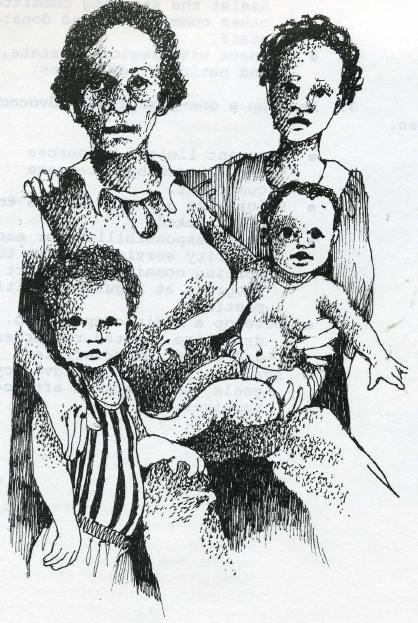Strength/Needs-Based Support
Strengths/Needs-Based Support for Children, Youth & Families

Marty Beyer coined the term “strengths/needs-based” in collaboration with others while designing services for delinquents in the District of Columbia in the late 1980’s and supporting Alabama child welfare workers to meet the needs of children in foster care through family meetings in the early 1990s. Dr. Beyer practices, writes about, and provides training on strengths/needs-based support for children, youth and their families, particularly in her approach to adolescent development, invention of visit coaching with children in foster care and their families, and design of Youth Family Team Meetings and Girl Family Team Meetings.
Building on child and family strengths and tailoring services to meet the child’s unique needs is a practical and compassionate approach. Although publications and training are available on family team meetings as well as strengths-oriented work with delinquents, purposely designing services to meet child/teenager needs and build on strengths is surprisingly uncommon in child welfare, juvenile justice, wraparound, schools, or mental health.;
Professionals bring knowledge and experience to their work with children and families, and how they offer it matters. Focusing on parenting deficits seldom leads to genuine partnership, yet it continues to be at the core of many practices despite evidence that the relationship between the caregiver and the family is a significant predictor of case outcome. Even when family assets or positive characteristics of the child or teenager are acknowledged, there is a tendency for services to revolve around problems. Deficit-driven approaches and one-size-fits-all services often make families and teenagers defensive. Achieving child/teen-centered, family-engaged practice means not only valuing the family’s involvement in decision-making, but listening to the voice of older children and teenagers regarding their unique needs. The real common ground among the family and caregivers are the child/teenager's needs. A need is what drives behavior. A need is what makes a behavior functional for the child or teenager (although the behavior itself can be undesirable and harmful). Without realizing it, well-intentioned adults often disregard the child/teen’s underlying needs because the needs behind a behavior are not always apparent and the focus of most interventions is to change undesirable behavior.
Services and supports are much more effective when they are specifically designed to meet a unique child/teen’s need. Instead of stating the child/teenager's needs and then thinking about services, a shortcut often taken in treatment planning confuses services with needs: "Mother needs drug treatment" or "Teen needs counseling." These statements describe services, not needs. Once the child/teen’s need is identified, it often turns out that the usual services (such as counseling or parent drug treatment) would not have met that need.
Too often a choice is made between the child's safety needs and attachment needs--a child/teen's losses are ignored in the rush to protect him/her from family problems or the safety risks at home are overlooked because of the desire not to separate him/her from family. Both the child/teen's safety and attachment needs must be identified and met. When we work with teenagers, if they do not want what we think they need, little will change. When we work with families, they must feel appreciated for what they do well, which may be culturally or in other ways special for them as a family.
The principles of strengths/needs-based practice are:
- Building on strengths inspires hope and recognizes that what is best about the family and child/teen are the foundation for positive change
- Focusing on a child's needs recognizes the family as an expert and begins the process of building an alliance with them that leads to their taking responsibility for meeting those needs
- Focusing on a teenager' s needs values the teenager’s and the family’s perspectives and begins the process of building an alliance with them that leads to the teenager making a commitment to change
- Identifying children' s and teenager’s needs invites the developmental expertise of clinicians, educators, and child welfare and juvenile justice professionals, (rather than their guidance on behavior control or parenting skills for which there is much less evidence)
- The needs of children and teenagers drive the tailoring of services and supports that fit their uniqueness, without being limited to an inflexible menu of interventions
- The child/teen's needs list serves as a workplan for caregivers—in agencies, the neighborhood, and the extended family--and provides stability if changes in workers or providers are necessary
Marty Beyer has applied these strengths/needs-based principles in adolescent development, visit coaching, her work with girls, and her design of Youth Family Team Meetings.